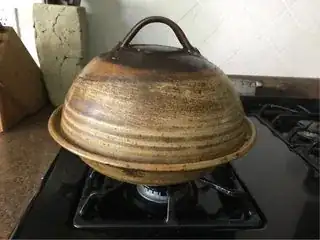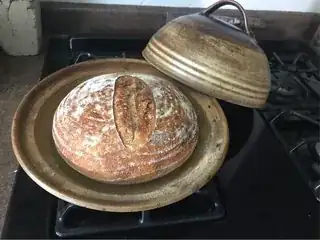I've been using this setup for 60% hydration dough:
20 mins in cloche, covered, 500° 10 mins in cloche, covered, 450° 20+ mins uncovered, 450°
For all intents and purposes, the cloche works like a Dutch oven, trapping moisture:
(You can see in my second photo my rescue attempt)
I've got a baking sheet with water to maintain humidity in the oven as I bake it.
The problem I'm running into is that when I score the bread (1/4" - 1/2", single cut along the centre, trying my best for a 45° angle, immediately before it goes in the oven), the score actually glazes over, becoming part of the crust, and preventing the score from doing it's job of 'ventilation'. The first time this happened, my dough blew out. The next two times, I've caught it happening in the first 5 mins and re-scored it after it's been in the oven.
So, two questions:
- Is scoring bread after it's baked for a few minutes a common thing? Do bakers do this?
- If not, what can I do to my baking method to prevent the score from crusting over?

